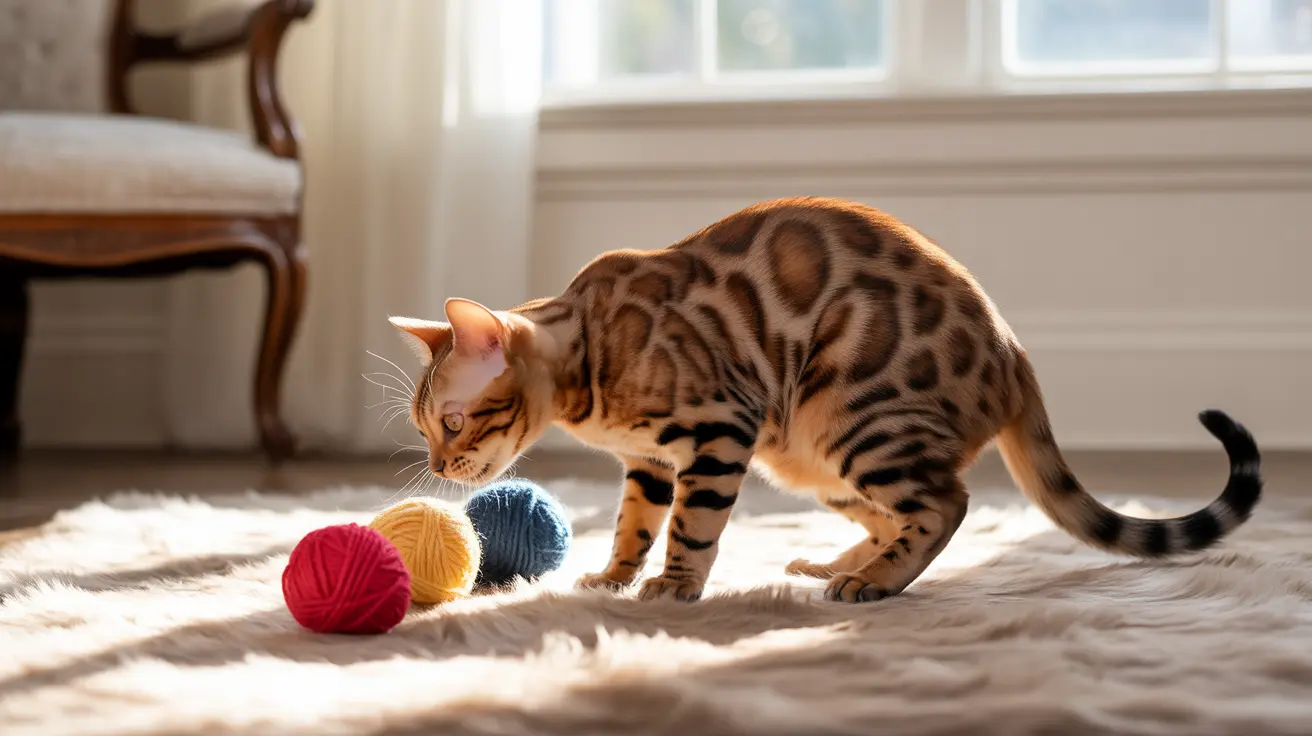Standard Breed Colors and Patterns
The breed standard recognizes four primary colors that best reflect the Savannah's wild serval ancestry:
Brown Spotted Tabby
This is the most iconic and sought-after Savannah color pattern. The warm golden to brown background showcases dramatic black or dark brown spots, closely resembling their serval ancestors. The contrast between the base coat and markings creates a stunning wild appearance that many enthusiasts prefer.
Silver Spotted Tabby
Silver Savannahs display a bright, silvery-white background with bold black spots. This striking combination results from the silver inhibitor gene, which suppresses pigment development in the hair shaft, creating a dramatic contrast that can be truly breathtaking.
Black (Melanistic)
Solid black Savannahs possess a mysterious allure, with their midnight-colored coats often revealing subtle "ghost" spotting patterns visible under bright light. This variation occurs when a cat inherits two copies of the non-agouti gene.
Black Smoke
These cats appear black at first glance, but their fur reveals a pale silver base when moved or parted. This dramatic contrast creates a smoky effect that can be particularly striking in motion.
Non-Standard and Rare Color Variations
While not accepted in show rings, several fascinating color variations exist:
Snow Variations
Snow Savannahs come in three distinct types: seal lynx point, seal mink, and seal sepia. These cats often feature stunning blue or aqua eyes, inherited from their Siamese ancestry.
Dilute Colors
Blue, lilac, and fawn Savannahs showcase softer, diluted versions of standard colors. Blue cats display a beautiful gray-blue coat, while lilac presents as a pale, cool-toned brown, and fawn appears as a light beige with pink undertones.
Genetic Factors and Inheritance
The diverse array of Savannah cat colors stems from complex genetic interactions:
- The Agouti gene determines whether a cat will display tabby patterns
- Silver coloring comes from the inhibitor gene
- Dilution genes create softer color variations
- Point-restricted patterns result from temperature-sensitive enzymes
Impact of Breeding and Selection
Careful breeding practices have helped maintain the wild appearance that makes Savannahs so distinctive while occasionally producing stunning rare colors. Responsible breeders focus on health and temperament alongside color, ensuring that the pursuit of unusual colors never compromises the breed's wellbeing.
Frequently Asked Questions
What are the standard coat colors accepted for Savannah cats in cat shows?
The officially accepted show colors for Savannah cats are brown (black) spotted tabby, silver spotted tabby, black (solid/melanistic), and black smoke. These colors are recognized by TICA and other major cat registries.
How do genetics influence the variety of Savannah cat colors and patterns?
Savannah cat colors are determined by multiple genes controlling pigmentation, pattern distribution, and color intensity. Key genes include the agouti gene for patterns, inhibitor gene for silver coloring, and various dilution genes that modify color intensity.
What rare or non-standard colors exist in Savannah cats, and why are they uncommon?
Rare colors include snow variations, blue, cinnamon, chocolate, fawn, and lilac. These colors are uncommon because they require specific genetic combinations and often need both parents to carry rare recessive genes.
How can I identify a brown spotted tabby Savannah cat versus a silver spotted tabby?
Brown spotted tabbies have a warm golden to brown background with black or dark brown spots. Silver spotted tabbies have a bright silver or white background with black spots. The contrast is typically more dramatic in silver spotted tabbies.
Are there any health concerns related to specific Savannah cat colors, such as white coats?
White Savannah cats may have an increased risk of deafness, particularly if they have blue eyes. This is related to the genetics of white fur and isn't unique to Savannahs but applies to all white cats. Otherwise, color-specific health issues are rare in the breed.






